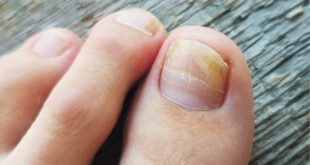 Hair loss affects millions of people worldwide, impacting not only physical appearance but also emotional well-being and self-confidence. Alopecia, the general medical term for hair loss, encompasses a broad spectrum of conditions that cause hair to fall out from various parts of the body. Understanding the different types of alopecia and their underlying causes is crucial for those experiencing hair loss and seeking appropriate treatment options.
Hair loss affects millions of people worldwide, impacting not only physical appearance but also emotional well-being and self-confidence. Alopecia, the general medical term for hair loss, encompasses a broad spectrum of conditions that cause hair to fall out from various parts of the body. Understanding the different types of alopecia and their underlying causes is crucial for those experiencing hair loss and seeking appropriate treatment options.
The Spectrum of Alopecia Conditions
Alopecia manifests in several distinct forms, each with unique characteristics and causes. The most common types include alopecia areata, androgenetic alopecia, and traction alopecia, though numerous other variations exist within the medical classification system.
Alopecia areata represents an autoimmune condition where the body’s immune system mistakenly attacks healthy hair follicles. This results in distinctive patchy hair loss that can occur anywhere on the body, though it most commonly affects the scalp. The patches are typically round or oval-shaped and may appear suddenly. In some cases, the condition progresses to alopecia totalis, involving complete scalp hair loss, or alopecia universalis, which affects hair across the entire body. The unpredictable nature of alopecia areata makes it particularly challenging for those affected, as hair may regrow spontaneously or the condition may persist or worsen over time.
Androgenetic alopecia, commonly known as male or female pattern baldness, represents the most prevalent form of hair loss. This genetic condition affects both men and women, though it manifests differently in each gender. Men typically experience receding hairlines and crown thinning, while women often notice diffuse thinning across the top of the scalp. The condition results from a combination of genetic predisposition and sensitivity to dihydrotestosterone (DHT), a hormone that causes hair follicles to shrink and eventually stop producing hair.
Traction alopecia develops from prolonged tension or pulling on hair strands, often due to certain hairstyling practices. Tight ponytails, braids, weaves, or chemical treatments can gradually damage hair follicles, leading to permanent hair loss if the damaging practices continue unchecked. Unlike other forms of alopecia, traction alopecia is entirely preventable through proper hair care practices.
The Emotional Impact of Hair Loss
Beyond the physical manifestations, alopecia significantly impacts psychological well-being. Many individuals experience decreased self-esteem, social anxiety, and depression following hair loss. The visible nature of the condition can affect professional and personal relationships, making effective treatment options highly sought after by those affected.
Advancing Treatment Through Clinical Research
RRecognizing the substantial need for effective alopecia treatments, research institutions continue developing innovative therapeutic approaches. Renstar Medical Research is currently conducting comprehensive clinical trials that offer hope for individuals experiencing mild to moderate hair loss.
These clinical studies are evaluating an investigational treatment specifically designed for males and females aged 18 to 65 who are dealing with mild to moderate androgenetic alopecia. The research represents a significant step forward in alopecia treatment development, potentially offering new solutions for those who have found limited success with existing therapies.
Clinical trials like these are essential for advancing medical understanding and treatment options for alopecia. Participants in such studies not only gain access to cutting-edge treatments before they become widely available but also contribute valuable data that helps researchers better understand hair loss mechanisms and treatment effectiveness.
For individuals considering participation in clinical research, it’s important to understand that investigational treatments undergo rigorous testing to evaluate both safety and efficacy. These studies are conducted under strict medical supervision with comprehensive monitoring to ensure participant safety throughout the research process.
Looking Forward
As research continues to evolve, the future holds promise for more effective alopecia treatments. The combination of improved understanding of hair loss mechanisms, advancing medical technologies, and ongoing clinical research efforts like those conducted by Renstar Medical Research brings hope to millions affected by various forms of alopecia.
Anyone experiencing hair loss should consult with healthcare professionals to determine the specific type of alopecia and explore available treatment options, including potential participation in clinical research studies that may provide access to innovative therapeutic approaches.
About Renstar Medical Research
Founded in 1998, Renstar Medical Research has been at the forefront of clinical research, dedicated to advancing medical breakthroughs through high-quality, multispecialty clinical trials. With over two decades of experience, we have conducted studies across a wide range of therapeutic areas, including obesity, chronic obstructive pulmonary disease (COPD), Alzheimer’s disease, Parkinson’s disease, psoriasis, and other conditions.
Through innovation, expertise, and a patient-centered approach, we strive to make a meaningful impact on global healthcare. At Renstar Medical Research, we are seeking tomorrow’s answers to the health questions of today.
For more information about an eczema clinical trial and to determine if you qualify, contact Renstar Medical Research today.
FRUSTRATED BY HAIR LOSS? YOU MAY BE ELIGIBLE IF:
. Aged 18-65 years or older
. Thinning on the crown
• Thinning on the temples
• Receding hairline
Renstar Medical Research
352.629.5800
 Central Florida Health and Wellness Magazine Health and Wellness Articles of the Villages
Central Florida Health and Wellness Magazine Health and Wellness Articles of the Villages



